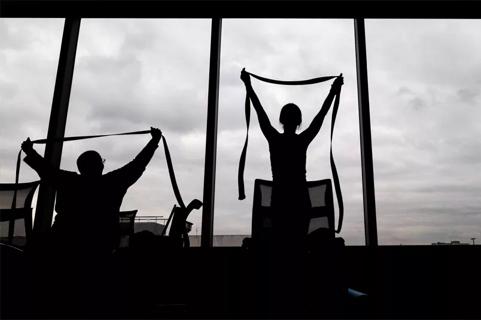Leadership role offers a way to improve the entire visit
Advertisement
Cleveland Clinic is a non-profit academic medical center. Advertising on our site helps support our mission. We do not endorse non-Cleveland Clinic products or services. Policy
Jamanda Haddock, MA, MRCP, FRCR, is a cross-sectional radiologist with an interest in chest disease and a passion for clinical work. Along the way, she stepped into management and leadership role as well. Today she serves as Interim Chief of Staff and Chair of Hospital Services at Cleveland Clinic London.
In an interview with Brian Bolwell, MD, for the podcast “Beyond Leadership,” Dr. Haddock discusses the importance of having team members who value collaboration. She also describes how she discovered that she enjoyed more than just the clinical side of the profession.
Dr. Bolwell: You had leadership roles in your department at the National Health Service. Can you tell me a little bit about that? How long that [took] to develop and what you were like as a new leader? Any lessons learned along the way?
Dr. Haddock: In my department, people didn’t really like leadership. We used to have a sort of Buggins’ turn. Well, after so many years the job has changed and the next person had to do it for a couple of years, … and it came to be my turn. But actually, there were things that I didn’t like about the system. From a very early stage of my career, I’ve understood that … patients want great clinical care, they want a surgeon with a low complication rate, they want a physician who understands the latest drugs. But around that, there is so much to the patient experience. And in my hospital, I felt that patients got great treatment and sometimes it was a poor experience.
And in my leadership role there, I think I was able to influence the experience in a very positive way, and I enjoyed doing that. I thought it made a very big difference for our patients, and I’m talking about things like the patient journey through the department. If you’re an inpatient, how that works, if you’re an outpatient, how you’re received, where you wait, where you get changed. These steps make a big difference. Who answers the phone? How quickly do you get your appointment made? I enjoyed doing that and I enjoyed also radiology as a support service, and I enjoyed working with my colleagues. I wanted my department to provide the best possible support for the clinicians and their patients. So, I found I enjoyed making a difference in that way in addition to the clinical work that I also love. I love being a doctor, always have done.
Advertisement
Advertisement

Automating routine medical coding tasks removes unnecessary barriers

Input from these central stakeholders is leading us to design for healing and hope

Initiative ensures patients leave the hospital with clean, dry clothing

Palliative and Supportive Care Teams offer comprehensive care to improve the lives of patients facing cancer

An unexpected health scare provides a potent reminder of what patients need most from their caregivers

Embrace coaching and other tips to be a stronger leader

How hospitals can weave ethics into daily nursing practice to strengthen patient-centered care

Strategies for building connections, staying present